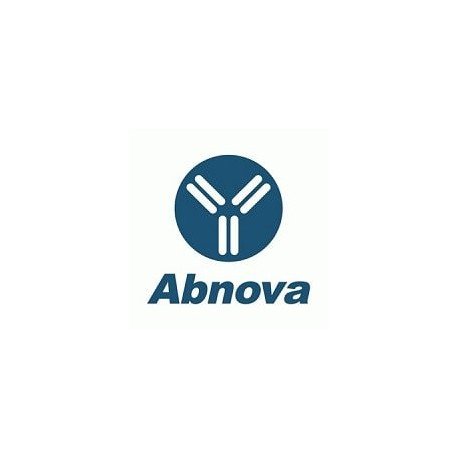Cart 0 Product Products (empty)
No products
To be determined Shipping
0,00 € Total
Prices are tax excluded
Product successfully added to your shopping cart
Quantity
Total
There are 0 items in your cart. There is 1 item in your cart.
Total products (tax excl.)
Total shipping (tax excl.) To be determined
Total (tax excl.)
Data sheet of PPP1R13B polyclonal antibody
| Brand | Abnova |
| Product type | Primary antibodies |
| Reactivity | Human,Mouse |
| Host species | Rabbit |
| Applications | ELISA,WB-Tr |
More info about PPP1R13B polyclonal antibody
| Brand: | Abnova |
| Reference: | PAB9974 |
| Product name: | PPP1R13B polyclonal antibody |
| Product description: | Rabbit polyclonal antibody raised against synthetic peptide of PPP1R13B. |
| Gene id: | 23368 |
| Gene name: | PPP1R13B |
| Gene alias: | ASPP1|KIAA0771|p53BP2-like|p85 |
| Gene description: | protein phosphatase 1, regulatory (inhibitor) subunit 13B |
| Immunogen: | A synthetic peptide corresponding to internal region of human PPP1R13B. |
| Protein accession: | NP_056131;Q96KQ4 |
| Form: | Liquid |
| Recommend dilutions: | ELISA (1:2500-1:10000) Western Blot (1:500-1:3000) The optimal working dilution should be determined by the end user. |
| Storage buffer: | In 20 mM KH2PO4, 150 mM NaCl, pH 7.2 (0.01% sodium azide) |
| Storage instruction: | Store at 4°C. For long term storage store at -20°C. Aliquot to avoid repeated freezing and thawing. |
| Quality control testing: | Antibody Reactive Against Synthetic Peptide. |
| Note: | This product contains sodium azide: a POISONOUS AND HAZARDOUS SUBSTANCE which should be handled by trained staff only. |
| Product type: | Primary antibodies |
| Host species: | Rabbit |
| Antigen species / target species: | Human |
| Reactivity: | Human,Mouse |
| Application image: |  |
| Application image note: | Western blot using PPP1R13B polyclonal antibody (Cat # PAB9974) to detect over-expressed PPP1R13B in MCF-7 cells (Lane 2, arrowhead). Lane 1 is a non-transfected control. Lane 3 is MCF-7 cells over-expressing TP53BP2. Cell extracts were electrophoresed and transferred to nitrocellulose. The membrane was probed with the primary antibody at a 1 : 1,000 dilution. The identity of the lower MW band at approximately 50 KDa is unknown. Primary experimental data indicate that the unknown band intensifies in extracts from p53 siRNA knockdown cells. Personal Communication, H. Yang, Univ. Oklahoma, Oklahoma City, OK. |
| Applications: | ELISA,WB-Tr |
| Shipping condition: | Dry Ice |
| Publications: | The ASPP family: deciding between life and death after DNA damage.Slee EA, Lu X. Toxicol Lett. 2003 Apr 4;139(2-3):81-7. |


